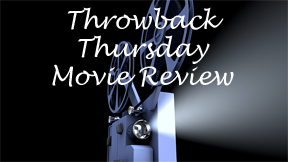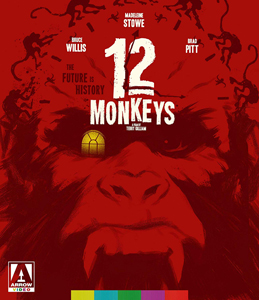The coronavirus of 2020 is pretty scary, but it’s nothing compared to what theaters scared up in 1995. In addition to “Outbreak,” that year gave us “12 Monkeys,” wherein a virus in 1997 kills off 5 billion people, leading to a post-apocalyptic world where humans live underground in miserable fashion.
The film has the grimy production design, stark camera angles and general quirkiness you’d expect from director Terry Gilliam (“Monty Python and the Holy Grail,” “Brazil”), along with a screenplay by David Webb Peoples (“Blade Runner”) and Janet Peoples that’s more confusing than it needs to be.
A dystopian 2035
Based on a short French film by Chris Marker, “12 Monkeys” is not about monkeys starting a pandemic (that’s “Outbreak”). It’s hard to know right away what it’s about, other than the crappy conditions of 2035, where Bruce Willis’ James Cole and other prisoners of the state “live like worms.” Nonetheless, “12 Monkeys” is watchable because of Willis’ sympathetic turn, one of the best of his career. As a reluctant time-traveling investigator, he has great chemistry with Madeleine Stowe’s Dr. Kate Railly.

“12 Monkeys” (1995)
Director: Terry Gilliam
Writers: Chris Marker, David Webb Peoples, Janet Peoples
Stars: Bruce Willis, Madeleine Stowe, Brad Pitt
Loosely speaking, this is the “Terminator” time-travel situation wherein Cole has to convince Kate he’s from the future and has to take important steps. But it’s more complex than that in both good and bad ways. The screenplay sometimes creates artificial confusion. For example, we see Cole go through the time-traveling process the second time he goes back in time. Why not show the process before the first trip? There’s no good reason, other than to play coy with the audience.
That said, the way the film looks at time travel is rather original. For one thing, the times Cole travels back to – 1990 (by mistake), the 1800s (by mistake) and 1996 (on purpose) – are The Past. 2035 is The Present. When you’re in The Past, you can learn information; indeed, it’s Cole’s mission to learn the source of the deadly virus. That will be the first step in allowing humans to repopulate the virus-laden surface in 2035. But you can’t change anything in The Past.
Additionally, the human brain is not meant to withstand all this time travel. So we get a rare situation where Cole thinks he’s crazy and Kate – who has seen Cole wink out of existence when he’s pulled back by his handlers in 2035 – has to convince him he’s sane.
Information-gathering mission
I can’t say they didn’t warn me, as this is indeed an information-gathering mission, but the ending is rather flat, with Cole learning the actual source of the virus. In retrospect, most of the film finds him chasing a red herring. While a lot of discussion about “12 Monkeys” centers on the question of what exactly happens (those YouTube “Explained” videos are made for movies like this), one could also ask what the meaning of the film is.

While it’s a neat twist that young Cole sees his future self – as well as his future lover, Kate — in an airport in 1996, there’s no emotional or insightful point to it. And there are whole stretches of this film that could’ve been condensed without hurting the narrative – notably the psych-ward sequence where Cole meets Brad Pitt’s Jeffrey Goines.
Pitt chews scenery, but I was more impressed with Willis’ turn in this rare role where he runs the gamut of feelings. Cole is totally put-upon in the future, where he has no choice but to go on this mission that will probably kill him. And yes, he has the Cassandra Complex of dealing with people who won’t believe he’s a time-traveler.
But I love it when he smiles in childlike fashion, marveling at fresh air and the radio, noting that “the 20th century had the best music.” We can see why Kate is won over by this man who kidnapped her; it’s not a case of Stockholm Syndrome. As unkind as its view of people is, “12 Monkeys” makes a case for humanity through Cole and Kate.
Designing a bleak future
The production design by Jeffrey Beecroft (“A Quiet Place”) drives home the point of how unappealing a post-virus future could be. When Cole is being instructed or debriefed by the 2035 scientist-rulers, he’s on a chair high up on a wall. Despite this, he is in the weaker position because a menacing bank of TV monitors floats nearby, with the scientists represented by close-ups of an eye.
The Big Brother state, wherein people are plucked with a giant hook from their hovel-cages whenever the scientists or foremen need them, is the least of it. The surface is covered in snow and grizzly bears, and if your suit punctures, you’re dead. But the most poignant depiction of a sad future comes when we see a clean department store in 1996 and Cole has a mind-flash of the store’s ruins in 2035.
“12 Monkeys” is too in love with its artificial twists and turns, and it spends too much time in the nuthouse showing off Pitt’s performance. Still, even as the narrative meanders away from the search for the virus’ origin, the production design and a game Bruce Willis are nothing to sneeze at.

